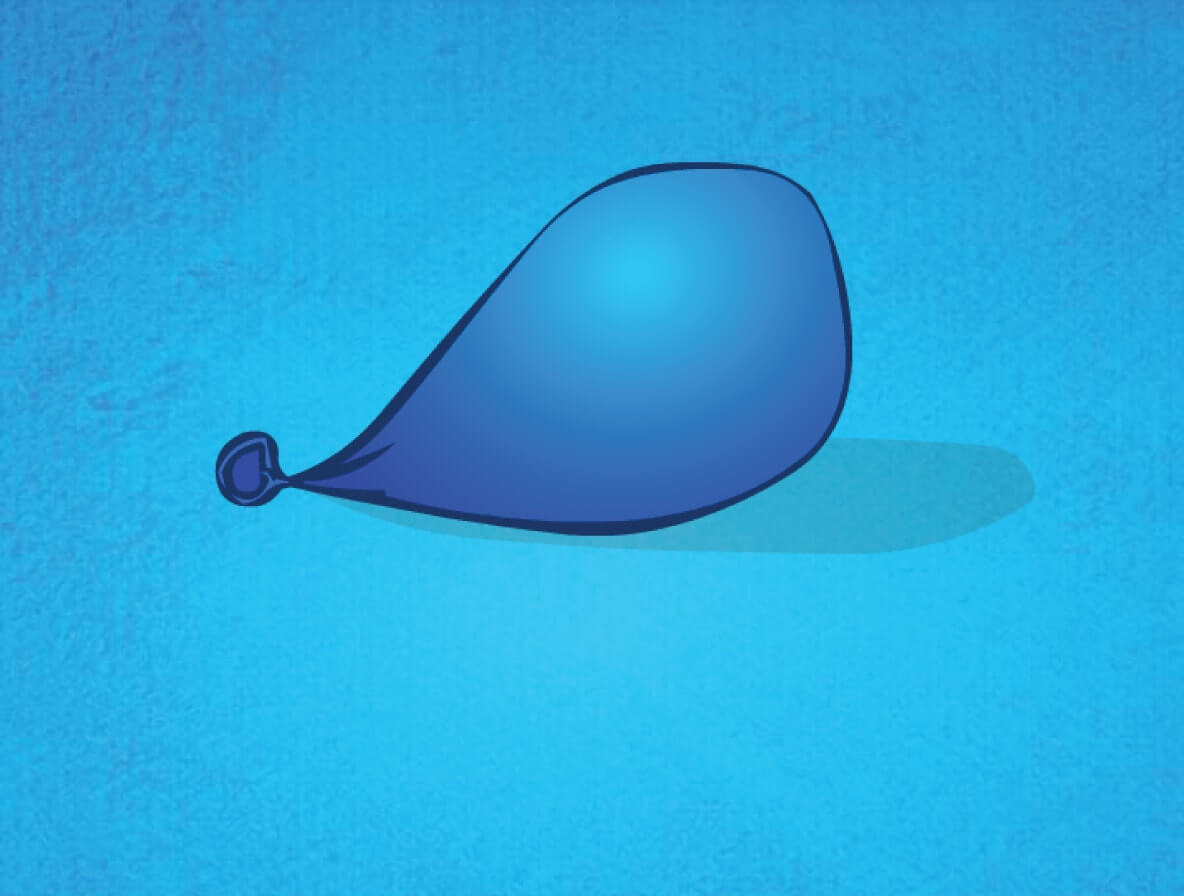Do you ever feel like you just need to take a break? Kids Help Phone partnered up with MindWell, a mental health training and well-being platform in Canada, to bring you new mindfulness tools and resources. You can use these tools on your wellness journey (and for help relaxing whenever you need to!).
A big part of mindfulness is taking time to notice what’s going on for you in the moment. It’s also about creating space to reflect on your thoughts and feelings without judging them. This can include reflecting on what feels new, grounding yourself and even just taking a few deep breaths. But there can be a lot more to it than that, depending on what works best for you! You can check out the mindfulness tools from MindWell and Kids Help Phone below for support building your skills.
Stay in a mindful zone with these video tips:
How to practise “Take 5”
Take 5 is a tool you can use anytime to stay in the mindful zone, especially when life feels particularly busy.
There are 5 basic steps to help you flip the switch and redirect your attention into the present moment.
Take 5 is simple and can be done effortlessly however is not so easy and when mastered can have a powerful effect on your day.
Remember you can take 5 anywhere and at anytime, you don’t need to close your eyes or necessarily even stop what you are doing.
The secret is to integrate Take 5 into whatever you are doing without anybody noticing.
The purpose of this recording is to teach you Take 5 so you can guide yourself through the practice as often as you would like and in any situation.
No need to remember word for word what is said.
You can customize your Take 5 to work best for you.
The key is to take 5 breaths and to adopt a mindset of non-judgement, openness, and patience.
Take 5 is a tool that you can use anytime especially when life feels particularly busy.
There are 5 basic steps to help you redirect your attention and get into the mindful zone.
Step 1, Notice the Cue
Step 2, Notice Something New
Step 3, Notice the Body
Step 4, Notice the Breath
Step 5, Notice Now
Step 1, Notice the Cue. Use cues in your environment to remind you to Take 5, it might be every time you brush your teeth, take a coffee break, walk through the door to your home, or see a given person. It doesn’t matter what the cue is, so long as you notice it. This is your gateway to Take 5. Now you are ready to get back in a mindful zone. Step 1 also cues your intention for Take 5. Take a moment to focus on the outcomes you want to create in your life.
Step 2, Notice Something New. Respond to your cue by noticing something new about yourself or environment that you weren’t paying attention to before.
For example, if you were listening to someone, you may notice something new about the person you were listening to, such as the quality of their voice. On a coffee break, you might tune into the feeling of the cup in your hand or the taste of the drink. Or you might simply refocus your attention into your physical surroundings to notice a new pattern, or texture, or colour on an object around you. Noticing something new can also include a small detail that is going right for you, or that you are grateful for today.
It doesn’t matter what you notice, and you are not trying to make things a certain way, good or bad. The practice is about learning to direct the attention with intention.
Step 3, Notice the Body. Next, whether you are standing or sitting bringing your attention to the feet, noticing the contact points your feet are making with the floor or shoes or any other point. Then, pressing the feet into the floor and lifting and lengthening up the spine. Feeling the body as a whole while you ground and lift.
Step 4, Notice the Breath. Now bring the attention to the breath. Begin with one complete breath. Feeling the breath moving into the body, feeling the breath moving out of the body. Then, deepening and lengthening the breath so the inhalation and the exhalation are each about 5 seconds. Finally, take five complete breaths this way. Don’t worry if you find your mind wandering just gently guide your attention back to the felt sensations of breathing and start again.
Step 5, Notice Now. Noticing what is present now, in this moment, not trying to change anything, rather observing and allowing things to be as they already are. Responding to now with a sense of openness, non-judgment, and patience. Once your brain is more fully wired into the moment you have a much better perspective to choose a wise step forward. You can always choose to repeat or extend any of the steps in Take 5. Remember your cue for the day and decide to take five every time you notice it. When you Take 5, you are creating new pathways in the brain that help the body destress, the mind re-focus, and optimize your ability to perform.
The more you integrate Take 5 into everything you do, the more seamless and beneficial it becomes.
Working with emotions
In addition to all the messages we check on a daily basis, we can also learn to tune into our emotional messages. The basis of emotional intelligence is receiving and understanding our emotions. Emotions are like personal messages, full of information about ourselves and situations. They are neither good nor bad, they are just information, that is constantly changing. We need to read our emotions, especially the difficult ones, or they can become problematic. When stressed, we are less likely to receive difficult messages accurately and try to think ourselves out of an unpleasant place, but thinking only makes it worse. It reinforces how far we are from where we want to be. Instead, we need to shift our mode from thinking to sensing. Receiving messages with Take 5 enables us to make better decisions. It’s a necessary first step in getting where you want to be.
Turning off the stress response
The stress response, also called fight or flight, is a hardwired evolutionary instinct governed by our sympathetic and parasympathetic nervous systems. This stress response gives us extra bursts of energy, as if physical action is required because we’re facing danger, making it hard to switch it off and relax. We’re awash in stress hormones all the time because we are chronically being triggered by real or imagined threats. Living in a constant state of tension suppresses our immune systems and puts us at risk for serious conditions, including heart disease, diabetes, and stroke. The bottom line is, we can learn to be less reactive and keep the stress response under control, by tuning into our breathing and returning our body to balance. Mindfulness practices like Take 5 can reverse the stress response and the beauty of it is that it’s always available to us. At any moment, we can begin to unravel stress with Take 5.
Thoughts are not facts
Imagine sitting at a train station, waiting for a train to arrive. Would you just get on the first train that pulled into the station? No, you would make sure the train is headed where you want to go. But how often do we get on the first thought that comes into our mind? Just as we learn to check which train pulls into the station and whether or not we want to take it, we can also get better at identifying thoughts that cross our mind. We often run the same stressful thoughts over and over in our mind. We experience them as facts when they’re really just projections of the mind. Mindfulness teaches that we can choose to step back and relate to our thoughts rather than be carried away by them. Take 5 helps us ground our attention in the present moment and get off thought trains that are taking us away.
Mindful or mindless
In any moment we are either in a mindful or mindless state. Either in the zone and paying attention or caught up in thoughts that keep us from the here and now. When we are mindless, we behave automatically and can get caught up thinking about the past or the future. This can often lead to mistakes. It can feel like we are going through the same day over and over again, which adds to our stress and anxiety. Mindfulness teaches us to pay attention in the present moment. This helps us to become less stressed, more focused and able to perform at our best. Whether we are with others, or eating or drinking, we notice what is new in our mind, body and surroundings. When we Take 5, we begin by taking one sole breath, then we deepen and lengthen the breath. Finally, we take five full breaths this way. Take 5 is the way to disrupt our mindlessness and hardwire our mindfulness.
Hardwiring happiness
Mindfulness can help us hardwire happiness in everyday life. We’ve discussed how we can work with difficult messages and now we’re focusing on receiving positive messages. Our brains have evolved to notice and hold on to the difficult moments more than the positive ones. We have to intentionally notice and deepen the good moments for them to count. If we have five positive interactions, one neutral, and one negative, which one will stick with us? Chances are it’s the negative. We need to intentionally focus on the positive to help make it stick. For example, when we notice small details, such as the clouds or the wind on our face, we experience simple joy or gratitude in the moment. We can hardwire happiness by taking the time to deepen and lengthen every positive moment. It’s something we have to actively do and begins by flipping the switch and getting into the zone.
Practise tools to “Take 5” with this downloadable guide:
Top Banner
MindWell, Take 5, Use these tools in sequence or separately. Use them quickly (5 seconds) or more deeply (5 minutes).
Box 1
Notice the Cue.
Choose a cue in your daily life that reminds you to Take 5. Your cue could be anything: having a drink of coffee or water, seeing a specific person, sitting down at your desk. When you notice your cue, you flip the switch from mindless to mindful.
Box 2
Notice the New.
Focus on something you weren’t paying attention to a moment ago. Bring your attention out of autopilot and into your senses. Become aware of sound, taste, touch, smell or sight.
Box 3
Notice your Body.
Sitting or standing, bring awareness to your posture. Press into your feet, seat and hands while you lift and lengthen up the spine, roll back your shoulders and align your ears over your shoulders.
Box 4
Notice your Breath.
Begin with one complete breath, noticing the breath at the belly, chest or nose. Lengthen and deepen the breath so each inhale and exhale is about 5 seconds. Now take 5 breaths this way.
Box 5
Notice the Now.
Respond to what is present in your current situation and internal experiences (thoughts, emotions, body sensations) with a sense of openness, patience and non-judgement. Now you are ready to take a wise step forward.
Mindwellu.com
Fun, simple, healthy, adaptable, personalized
Bottom Banner
Kids Help Phone, Text 686868, kidshelpphone.ca, 1-800-668-6868
Practise tools to “Take 5” with this audio guide:
Welcome to this Take 5 practice.
Which can be done wherever you are. Begin by shifting your attention to notice something new in your immediate experience. Something you weren’t paying attention to a moment ago. This can be the smallest detail that you are now noticing, such as colour, texture, pressure, temperature, or sound, and spending a few moments noticing this newness. Observing any feelings that arise.
Next whether you are standing or sitting bringing your attention to the feet. Noticing the contact points your feet are making with the floor or shoes or any other point. Then pressing the feet into the floor and lifting and lengthening up the spine, feeling the body as a whole while you ground and lift.
Now bringing your attention to your breathing, beginning with one complete breath, feeling the breath moving into the body, feeling the breath moving out of the body. Then deepening and lengthening the breath so the inhalation and the exhalation are each about five seconds.
Finally taking five breaths this way, counting the inhale and the exhale as one breath.
Don’t worry if you find your mind wandering, just gently guide your attention back to the touch of breath in the body and start again.
Simply noticing where you most easily feel the breath in the body, perhaps in the belly, the chest, or nostrils.
After five breaths noticing what is present now in body and mind. Not trying to change anything rather allowing things to be as they already are and stepping into now with a sense of openness, non-judgment and patience.
Remember you can always choose to Take 5 again or continue with your day. As you bring this practice to a close planting a reminder in your day to queue Take 5.
Take 5 helps you more fully come into the present moment, so the body can distress, the mind can focus, and you have a much better perspective to choose a wise step forward.
Try self-guided exercises for relaxation with these online resources:
If you would like support with mindfulness, balance, wellness or anything else, you can reach out to Kids Help Phone 24/7.
Kids Help Phone would like to thank MindWell for their partnership, sharing their resources with young people across Canada and supporting youth mental health!










